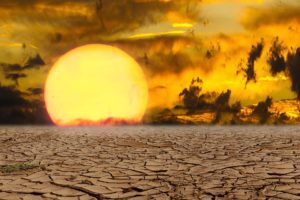 Brace yourself ninjas. I'm about to bum you out. But if you stick with me, there's rainbow unicorns at the end. I promise.
Brace yourself ninjas. I'm about to bum you out. But if you stick with me, there's rainbow unicorns at the end. I promise.
Chi, sui, ka, fu, and ku. These form the foundation for the San Shin or Gokui kata forms that Dai Shihan Mark Roemke teaches during his NTTV Live classes. These represent the elements of Earth, Water, Fire, Wind, and Void. We also use these elements as the thematic modules for our NiN or Ninjas in Nature training.
There is a another lens to view these elements as we humans collectively head into an uncertain planetary future with the growing disruptions of the climate.
Chi- the Earth, or the ground beneath our feet in many places, is drying due to drought, deforestation and desertification. It is also eroding at alarming rates due to industrial agriculture.
 Sui- the waters are rising in the ocean as the glaciers melt, and the rains fall with unseasonable force and frequency.
Sui- the waters are rising in the ocean as the glaciers melt, and the rains fall with unseasonable force and frequency.
Ka- wildfires are becoming more frequent, intense, and devastating. I write this after a recent unseasonably late December wildfire tore through the Boulder, Colorado area.
Fu- the winds from hurricanes and tornadoes are occurring more frequently, with higher intensity, and longer seasonal duration.
But what of ku, the void? The mystery of the unknown is what lies before us all with our collective future on this planet.
But I don't mean to fill you with doom and gloom in describing this. I don't have to. There's plenty of others doing this for me. Sadly, the news is saturated daily with stories of the above elements gone haywire. It's hard for me to personally keep track of all the climate related disasters in this past year. But this is old news.
Doom and gloom. I know. But hang in there ninjas. I hear the hooves of unicorns approaching...
 I've been closely following the climate science for decades, since my work in the wildlife conservation field began over thirty years ago. I worked with critically endangered birds in Hawaii for many years. Hawaii was and unfortunately still is considered "the endangered species capital of the United States." We are in the midst of what is now considered the 6th great mass extinction event in the history of our planet. The last mass extinction event occurred at the end of the cretaceous period when a meteor took out the dinosaurs, and we all know how that turned out. For decades scientists have been raising red flags regarding the effects of climate change. While strides have been made in developing some green technologies, and some conservation efforts have succeeded, the unfortunate truth is that trends continue, and the intensity of the elements continues to amplify.
I've been closely following the climate science for decades, since my work in the wildlife conservation field began over thirty years ago. I worked with critically endangered birds in Hawaii for many years. Hawaii was and unfortunately still is considered "the endangered species capital of the United States." We are in the midst of what is now considered the 6th great mass extinction event in the history of our planet. The last mass extinction event occurred at the end of the cretaceous period when a meteor took out the dinosaurs, and we all know how that turned out. For decades scientists have been raising red flags regarding the effects of climate change. While strides have been made in developing some green technologies, and some conservation efforts have succeeded, the unfortunate truth is that trends continue, and the intensity of the elements continues to amplify.
 More recently, there is a new lexicon that has entered the climate change discussion from scientists, policy makers, and the public at large. These discussions include terms such as "tipping point," "the end of growth," "overreach," "collapsology," and even "the extinction of the human species." Many believe we have already passed the tipping point at which we can no longer hold back the devastation and disruption with increasing climate change. This discussion is supported by the fact that increasing average global temperature is no longer a linear progression with CO2 in the atmosphere. In other words, even if we could reverse, or remove the additional CO2 that began increasing with the industrial revolution, the climate would still continue to warm. This non-linear increase is due to things such as reduced solar reflection by snow in the polar regions, increased methane from melting permafrost in the arctic, subsurface oceanic methane release, and changes in the oceanic conveyor belt, to mention a few. There is a very real possibility that we have set things in motion that cannot be stopped at this point.
More recently, there is a new lexicon that has entered the climate change discussion from scientists, policy makers, and the public at large. These discussions include terms such as "tipping point," "the end of growth," "overreach," "collapsology," and even "the extinction of the human species." Many believe we have already passed the tipping point at which we can no longer hold back the devastation and disruption with increasing climate change. This discussion is supported by the fact that increasing average global temperature is no longer a linear progression with CO2 in the atmosphere. In other words, even if we could reverse, or remove the additional CO2 that began increasing with the industrial revolution, the climate would still continue to warm. This non-linear increase is due to things such as reduced solar reflection by snow in the polar regions, increased methane from melting permafrost in the arctic, subsurface oceanic methane release, and changes in the oceanic conveyor belt, to mention a few. There is a very real possibility that we have set things in motion that cannot be stopped at this point.
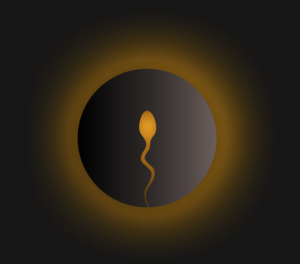 We are also on course for the end of growth, meaning when the growth of civilization collides with the end of finite resources, in other words the "collapse of civilization." This is predicted to occur around 2040. Interestingly, this is almost the exact time at which human fertility is predicted to reach zero, due to the presence of toxic chemicals to which we are all exposed. We will more or less cease to be able to reproduce as a species by this date. Recent studies are also showing that climate change is effecting the health of fetuses, babies and and infants globally while increased fossil fuel burning is lowering women's fertility. Not far behind this timeline is soil depletion by modern agricultural techniques. The UN estimates that all viable topsoil for farming will be depleted in 53 years if no changes are made in practices. Or looking at it another way, we have only 53 annual harvests remaining.
We are also on course for the end of growth, meaning when the growth of civilization collides with the end of finite resources, in other words the "collapse of civilization." This is predicted to occur around 2040. Interestingly, this is almost the exact time at which human fertility is predicted to reach zero, due to the presence of toxic chemicals to which we are all exposed. We will more or less cease to be able to reproduce as a species by this date. Recent studies are also showing that climate change is effecting the health of fetuses, babies and and infants globally while increased fossil fuel burning is lowering women's fertility. Not far behind this timeline is soil depletion by modern agricultural techniques. The UN estimates that all viable topsoil for farming will be depleted in 53 years if no changes are made in practices. Or looking at it another way, we have only 53 annual harvests remaining.
Have I totally bummed you out yet? Don't forget..rainbow unicorns.
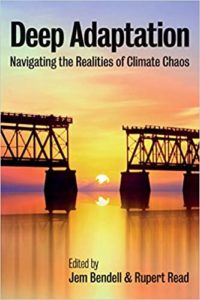 A 2018 article published by Jem Bendell entitled "Deep Adaptation: a map for navigating climate tragedy," quickly became a global phenomenon, with millions of downloads. It went viral. It sparked a new global movement and a subsequent book that was recently published. The idea behind deep adaptation states that while we need to continue to do everything we can to mitigate the effects of climate change, we need to prepare economically, culturally, socially, and psychologically for collapse. Further, while no one knows exactly what collapse will look like, we need to begin having these important discussions now, even as we are seeing increasing disruptions, so that we minimize the ultimate effects of the change that is coming during our lifetimes.
A 2018 article published by Jem Bendell entitled "Deep Adaptation: a map for navigating climate tragedy," quickly became a global phenomenon, with millions of downloads. It went viral. It sparked a new global movement and a subsequent book that was recently published. The idea behind deep adaptation states that while we need to continue to do everything we can to mitigate the effects of climate change, we need to prepare economically, culturally, socially, and psychologically for collapse. Further, while no one knows exactly what collapse will look like, we need to begin having these important discussions now, even as we are seeing increasing disruptions, so that we minimize the ultimate effects of the change that is coming during our lifetimes.
 How prepared are we currently for an economic and ecological societal collapse? More than 95% of the food coming into the major cities in our country arrives by long-distance trucking. If this ceased, it is estimated that New York would have a four day supply of food. Los Angeles would have three days of food. In 1880, 50% of Americans were farmers. Today, that number is less than 2%. In 1945, Americans grew 40% of their food in backyard gardens. That number is now less than 0.1%. This is homeland insecurity. I wonder how many Americans today can identify a single wild edible plant? How many know the ubiquitous edible "weeds" in their yards, that they kill with glyphosate herbicides at the cost to their own fertility and health? As I look out my kitchen window during the winter, I ask myself— how can I expand and grow more? What new wild edibles can I learn and find in the nearby forests?
How prepared are we currently for an economic and ecological societal collapse? More than 95% of the food coming into the major cities in our country arrives by long-distance trucking. If this ceased, it is estimated that New York would have a four day supply of food. Los Angeles would have three days of food. In 1880, 50% of Americans were farmers. Today, that number is less than 2%. In 1945, Americans grew 40% of their food in backyard gardens. That number is now less than 0.1%. This is homeland insecurity. I wonder how many Americans today can identify a single wild edible plant? How many know the ubiquitous edible "weeds" in their yards, that they kill with glyphosate herbicides at the cost to their own fertility and health? As I look out my kitchen window during the winter, I ask myself— how can I expand and grow more? What new wild edibles can I learn and find in the nearby forests?
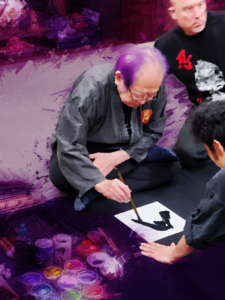 These realizations, however, have given me an awakened perspective on the value and role of the art of the ninja when faced with the possibility of collapse. If you examine historical examples of societal collapse, wars or social unrest typically precede or follow the downfall of civilizations. While actually having to defend yourself or others when faced with unrest might be a real matter worthy of discussion, there is a deeper value that I find in the art. The essence of perseverance, or the meaning of "nin," is at the heart of what motivates me daily when I wake. What am I going to do today, to take a necessary step towards adapting to the unknown that lies on the horizon? I have been teaching survival skills for years. Beyond shelter, water, fire, and food, we teach that attitude is the most important survival skill. If you give up, and admit defeat in the face of doom, then you most likely will fail. Remembering to embody the spirit of "nin" is thus essential to survival.
These realizations, however, have given me an awakened perspective on the value and role of the art of the ninja when faced with the possibility of collapse. If you examine historical examples of societal collapse, wars or social unrest typically precede or follow the downfall of civilizations. While actually having to defend yourself or others when faced with unrest might be a real matter worthy of discussion, there is a deeper value that I find in the art. The essence of perseverance, or the meaning of "nin," is at the heart of what motivates me daily when I wake. What am I going to do today, to take a necessary step towards adapting to the unknown that lies on the horizon? I have been teaching survival skills for years. Beyond shelter, water, fire, and food, we teach that attitude is the most important survival skill. If you give up, and admit defeat in the face of doom, then you most likely will fail. Remembering to embody the spirit of "nin" is thus essential to survival.
I have also realized that a valuable skill of the art of ninjutsu is being able to adapt to any situation. When training with Sensei Roemke, he is always throwing challenges at us that are outside the box, that cause us to think differently and adapt. I remember during one of my first classes, after I was feeling confident with all my forward, backwards, and sideways rolls, he suddenly threw a curve ball at us. He took every weapon off of the wall and scattered them all over the floor. Rokushaku bos, hanbos, bokken, kyoketsu shoges and more covered the majority of the mat. "Okay, everyone, zenpo kaiten naname, forward rolls, over the mat! Ready go!" I'll never forget that lesson. I had to adapt the basics to an unexpected, seemingly impossible challenge.
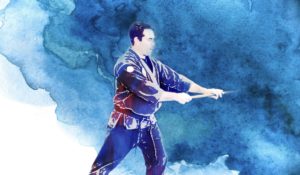 I posed this question to Dai Shihan Mark Roemke regarding this topic: How does the art of the ninja relate to an uncertain future of disruption on our planet? Here is his response.
I posed this question to Dai Shihan Mark Roemke regarding this topic: How does the art of the ninja relate to an uncertain future of disruption on our planet? Here is his response.
"The meaning of perseverance is to adapt or overcome. In our uncertain present and future, people need to learn to adapt. One way to persevere is to find a positive inner mindset. One of the key lessons that I have learned from Hatsumi Sensei, is to have a positive mental attitude. I have also learned this from my military and survival skills training. Your mind is so much stronger than your body. Your body will try to quit before your mind does. If you have fortitude, strong will, and perseverance, then you can adapt to any situation. Perseverance means to adapt in many ways— physically, mentally, and spiritually. This is a skill that modern ninjas have, that many people in our world lack. Most people will just give up in a challenging situation. The mindset of the ninja is to keep moving forward and thriving."
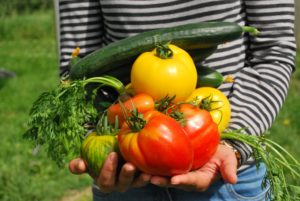 Beyond my garden, I think about my own kids and the youth I have encountered with the programs I teach. I realize that to simply hope that our governments and corporations can figure out a solution to climate change while continuing "business as usual" is not only foolish, but does an extreme disservice to the youth of today and the future generations. If I make it to 2045, I'll be firmly in my elder years. My kids, grandkids, or great grandkids (if there are still enough viable sperm and eggs by then) will be the ones facing the brunt of this trajectory. There's a song that I love that has the words that speak to this:
Beyond my garden, I think about my own kids and the youth I have encountered with the programs I teach. I realize that to simply hope that our governments and corporations can figure out a solution to climate change while continuing "business as usual" is not only foolish, but does an extreme disservice to the youth of today and the future generations. If I make it to 2045, I'll be firmly in my elder years. My kids, grandkids, or great grandkids (if there are still enough viable sperm and eggs by then) will be the ones facing the brunt of this trajectory. There's a song that I love that has the words that speak to this:
"The Earth is not given to us by our parents. It is loaned to us by our children's children." - Wookiefoot
These recent reports and projections were a real wake up call for me. I used to believe that even though I was trying to do what I could in this lifetime to make a positive change regarding the health of the planet, that the ultimate disruptions were far off on the horizon. There was still plenty of time. I no longer think that way, and I also realize that this ignorance is a form of denial.
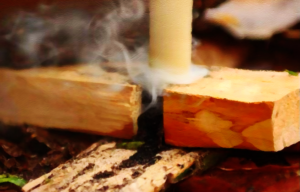 I also have a new perspective on the large volume of skills that we have put together for youth with our Ninjas in Nature program. I used to view them primarily as a means to help someone connect deeply to nature, while building powerful self sufficiency, awareness, and self confidence through the martial arts skills. Connect someone deeply to nature, and they will want to save it was once the standard mantra. The end result was a truly happy and whole being, with a desire to preserve nature, and still is. Unfortunately, the pragmatist and former Boys Scout in me remembers the old motto: "be prepared." How to prepare for an uncertain future, with no template from history to go by, is at the core of this challenge for me.
I also have a new perspective on the large volume of skills that we have put together for youth with our Ninjas in Nature program. I used to view them primarily as a means to help someone connect deeply to nature, while building powerful self sufficiency, awareness, and self confidence through the martial arts skills. Connect someone deeply to nature, and they will want to save it was once the standard mantra. The end result was a truly happy and whole being, with a desire to preserve nature, and still is. Unfortunately, the pragmatist and former Boys Scout in me remembers the old motto: "be prepared." How to prepare for an uncertain future, with no template from history to go by, is at the core of this challenge for me.
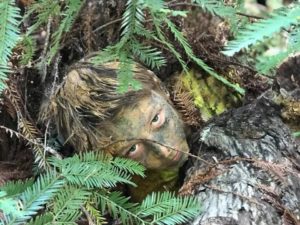 But now I see these skills as essential tools for adapting to the unknown change and disruptions to be faced by the inhabitants of our planet. It's not just the confidence of knowing how to find and process acorns as a vital protein source should the shipping trucks cease to show up, or how to make a fire by friction if the electricity goes down. It's about how to tap into the spirit of perseverance.
But now I see these skills as essential tools for adapting to the unknown change and disruptions to be faced by the inhabitants of our planet. It's not just the confidence of knowing how to find and process acorns as a vital protein source should the shipping trucks cease to show up, or how to make a fire by friction if the electricity goes down. It's about how to tap into the spirit of perseverance.
I've learned a lot by watching how youth in our nature program learn to adapt to challenges that nature throws unexpectedly at them. When they have been stung multiple times by an angry horde of wasps, and know how to find the nearby plantain remedy; when they have been covered head to toe in mud camouflage while crawling on their belly for hours in a forest at night; when they have found the glowing ember under their spindle with blistered, cold hands in a snowstorm when they needed a fire— in those moments I have witnessed something. I have seen that they knew discomfort and the unknown intimately. They knew failure. They knew perseverance. But above all, they knew the joy of what it meant to be truly alive and grateful for each day, and to be present in a moment in time. This mindset is the gift we can strive to pass on to our kids and future generations as we head into one of the greatest challenges our species has ever faced. Moreover, they are the skills that our ancestors depended upon and passed down to us. To me, passing down these important martial arts and survival skills are the essence of "nin" or being a ninja.
But I promised rainbow unicorns...
 Over 98% of all life that has ever lived on this planet has gone extinct. Think about that. The deck was stacked against us as a species long before we ever appeared on this planet. There have been five major extinction events in the history of planet Earth, and we likely are driving the current extinction bus blindly towards the precipice of the sixth. Still, after every major extinction event, something more beautiful evolved in the aftermath. Dinosaurs and ferns were pretty cool, but the mammals and flowering plants that followed were much more beautiful. I know. I'm a biased mammal. Still, I think the photographers and landscape artists are on my side. While this may sound like a nihilistic doomsday perspective, I find solace in stepping back to look at the wide angle vision, long view of our human time on Earth, and our collective connection to the mystery that holds this tapestry together. There is a beauty to this mystery that we are part of. One definition that I heard recently for "love" is a state of consciousness that is an awareness of beauty. I love the mystery.
Over 98% of all life that has ever lived on this planet has gone extinct. Think about that. The deck was stacked against us as a species long before we ever appeared on this planet. There have been five major extinction events in the history of planet Earth, and we likely are driving the current extinction bus blindly towards the precipice of the sixth. Still, after every major extinction event, something more beautiful evolved in the aftermath. Dinosaurs and ferns were pretty cool, but the mammals and flowering plants that followed were much more beautiful. I know. I'm a biased mammal. Still, I think the photographers and landscape artists are on my side. While this may sound like a nihilistic doomsday perspective, I find solace in stepping back to look at the wide angle vision, long view of our human time on Earth, and our collective connection to the mystery that holds this tapestry together. There is a beauty to this mystery that we are part of. One definition that I heard recently for "love" is a state of consciousness that is an awareness of beauty. I love the mystery.
Even with the long view odds stacked against us, and the short term prospects appearing a bit daunting for our survival, I'm an optimist. There's an opportunity here. Our old operating system of resource extraction for a distraction economy to produce giant piles of things in landfills that, in the end, have little meaning or value, has run its course. We have an opportunity to change the way we operate externally as humans who have been given the responsibility of stewarding this planet. But we also have an inner opportunity. We have an opportunity to evolve the way we think, act, and focus our internal and external energies as beings on this planet.
Chi, sui, ka, fu, ku. These energetic elements are within each of us. If we can bring these inner elements into alignment, our outer world, and all of its elements that are showing signs of dis-ease, just might find alignment. And if we don't pull this one off? Well...humans are beautiful. But you know, rainbow unicorns just might evolve after this sixth wave passes. And we all know...they're pretty awesome.
Check out the video below where Dai Shihan Mark Roemke demonstrates a technique to practice the elemental forms of Chi, Sui, Ka, Fu, and Ku from the San Shin or Gokui no Kata.
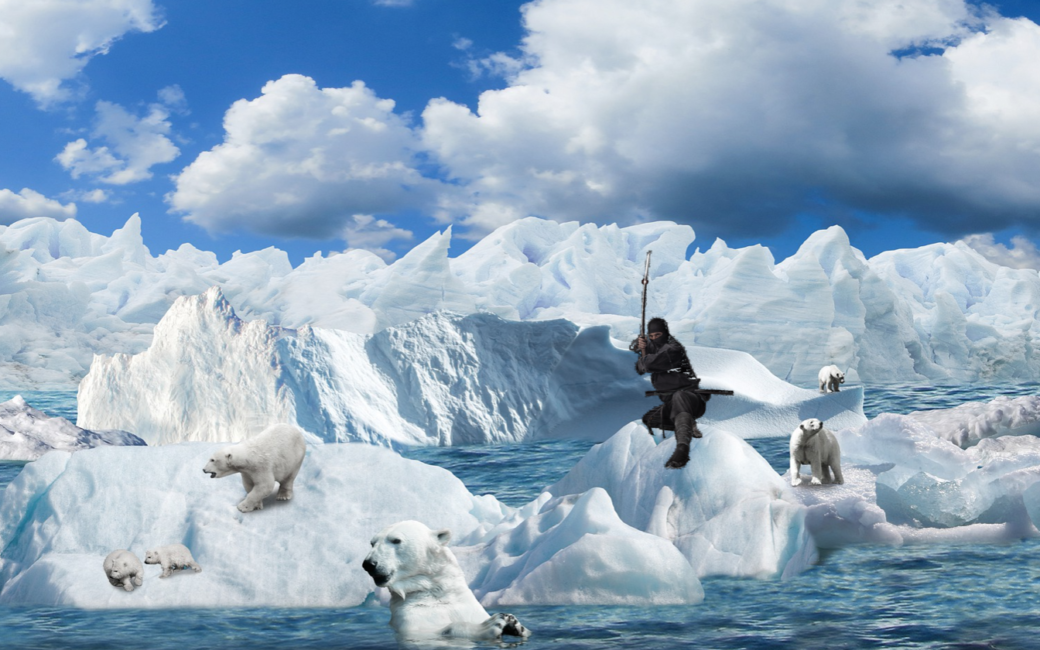
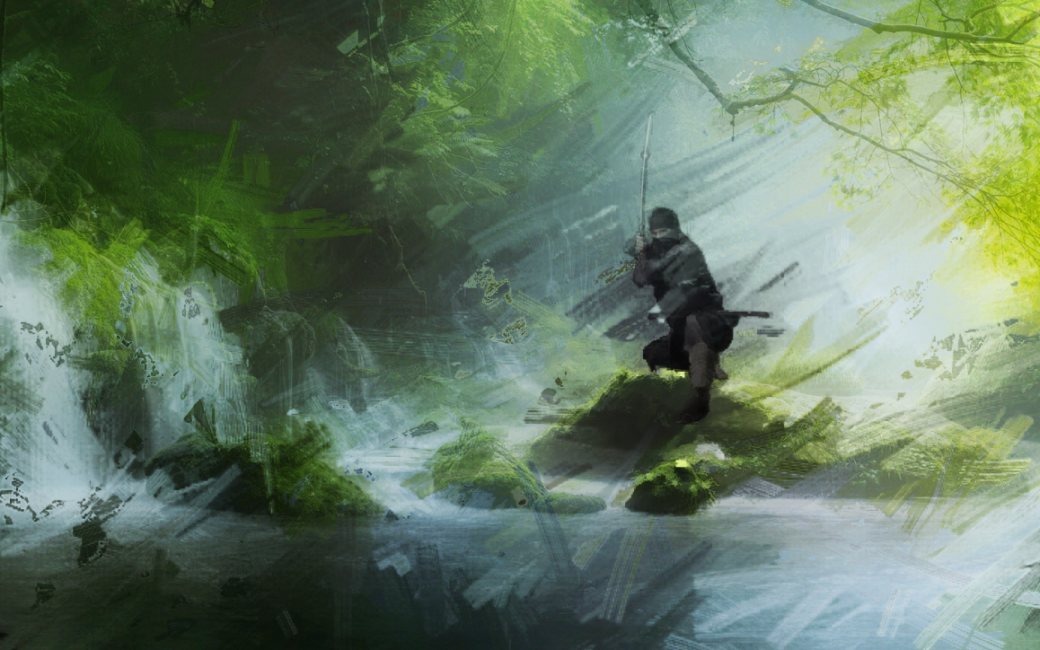
 In the early 1980's, a national health crisis emerged in Japan that resulted from increasing industrialization and a culture of overwork. During this time, researchers in Japan discovered that trees released certain chemicals to protect themselves and the forest around them from diseases and pests. They discovered when humans were exposed to these chemicals known as phytoncides, they too demonstrated increased health and vigor as evidenced by elevated moods, lowered stress hormones, increased immune responses and more. Government officials in Japan encouraged people to practice “Shinrin-yoku” which translates to “bathe in the forest atmosphere” and thus “Forest Bathing” was born.
In the early 1980's, a national health crisis emerged in Japan that resulted from increasing industrialization and a culture of overwork. During this time, researchers in Japan discovered that trees released certain chemicals to protect themselves and the forest around them from diseases and pests. They discovered when humans were exposed to these chemicals known as phytoncides, they too demonstrated increased health and vigor as evidenced by elevated moods, lowered stress hormones, increased immune responses and more. Government officials in Japan encouraged people to practice “Shinrin-yoku” which translates to “bathe in the forest atmosphere” and thus “Forest Bathing” was born. Pathways: For people not familiar with Forest Therapy or the Japanese practice of Shinrin-yoku, could you describe this practice?
Pathways: For people not familiar with Forest Therapy or the Japanese practice of Shinrin-yoku, could you describe this practice? Caitlin: There are so many benefits to forest bathing and simply spending time in nature. There is a growing body of scientific research that confirms what seems like an obvious truth— human beings benefit from engaging with the natural world. The list of well documented benefits of forest bathing is quite extensive. Benefits include lowered cortisol and stress hormones, reduced inflammation, elevated mood, lowered blood pressure, increased focus and attention, and enhanced creativity. There are many more documented benefits. One of the most exciting discoveries, which sparked the movement of Forest Bathing, is the discovery that chemicals released by trees to protect themselves and their forest communities from pests and diseases also dramatically enhance immunity in human beings. When we spend time in nature, and specifically amongst trees, we are exposed to these chemicals and it causes our immune systems to produce a special white blood cell called a "natural killer cell". It's a scary little name for a highly beneficial cell that has the ability to find and combat disease in a cell before the cell has any signs of damage. In a sense, the forest has the potential to heal us before we are even sick.
Caitlin: There are so many benefits to forest bathing and simply spending time in nature. There is a growing body of scientific research that confirms what seems like an obvious truth— human beings benefit from engaging with the natural world. The list of well documented benefits of forest bathing is quite extensive. Benefits include lowered cortisol and stress hormones, reduced inflammation, elevated mood, lowered blood pressure, increased focus and attention, and enhanced creativity. There are many more documented benefits. One of the most exciting discoveries, which sparked the movement of Forest Bathing, is the discovery that chemicals released by trees to protect themselves and their forest communities from pests and diseases also dramatically enhance immunity in human beings. When we spend time in nature, and specifically amongst trees, we are exposed to these chemicals and it causes our immune systems to produce a special white blood cell called a "natural killer cell". It's a scary little name for a highly beneficial cell that has the ability to find and combat disease in a cell before the cell has any signs of damage. In a sense, the forest has the potential to heal us before we are even sick. There are two outcomes that are most universal and profound for people. One is the increased understanding of how to create a non-coercive experience for others. Learning to do this is a big part of the training and it is also profound because it is something that is rarely modeled or experienced in the western world. The other outcome that is closely tied with this is an increased faith in nature to give people exactly what they need, when they need it.
There are two outcomes that are most universal and profound for people. One is the increased understanding of how to create a non-coercive experience for others. Learning to do this is a big part of the training and it is also profound because it is something that is rarely modeled or experienced in the western world. The other outcome that is closely tied with this is an increased faith in nature to give people exactly what they need, when they need it. Caitlin: I think one of the coveted gifts of this martial art is the ability to blend in and to be invisible. Besides the obvious health benefits that I already mentioned, I think this practice may be of particular interest to a ninjutsu practitioner for one simple and esoteric reason—you do not become invisible by hiding in the forest. You become invisible by being hidden by the forest. It takes attunement and relationship-building with nature to understand how to let the land fold you into itself. Attunement with nature is at the heart of the forest therapy guide training.
Caitlin: I think one of the coveted gifts of this martial art is the ability to blend in and to be invisible. Besides the obvious health benefits that I already mentioned, I think this practice may be of particular interest to a ninjutsu practitioner for one simple and esoteric reason—you do not become invisible by hiding in the forest. You become invisible by being hidden by the forest. It takes attunement and relationship-building with nature to understand how to let the land fold you into itself. Attunement with nature is at the heart of the forest therapy guide training. There is a little book I love called "What a Plant Knows" by Daniel Chamovitz. It's all about the sensory experience of plants that science has confirmed thus far. The first sentence of the book says "Think about this: plants see you." I think it is important to take this type of understanding with us into our forest bathing experiences because not only does it increase the benefits that we as humans get from the experience, but it also increases the likelihood that we will develop a sense of stewardship and reciprocity with the natural world. It matters that we understand we are not alone in this world, for our own health, and for the health of this world we co-occupy with other life.
There is a little book I love called "What a Plant Knows" by Daniel Chamovitz. It's all about the sensory experience of plants that science has confirmed thus far. The first sentence of the book says "Think about this: plants see you." I think it is important to take this type of understanding with us into our forest bathing experiences because not only does it increase the benefits that we as humans get from the experience, but it also increases the likelihood that we will develop a sense of stewardship and reciprocity with the natural world. It matters that we understand we are not alone in this world, for our own health, and for the health of this world we co-occupy with other life.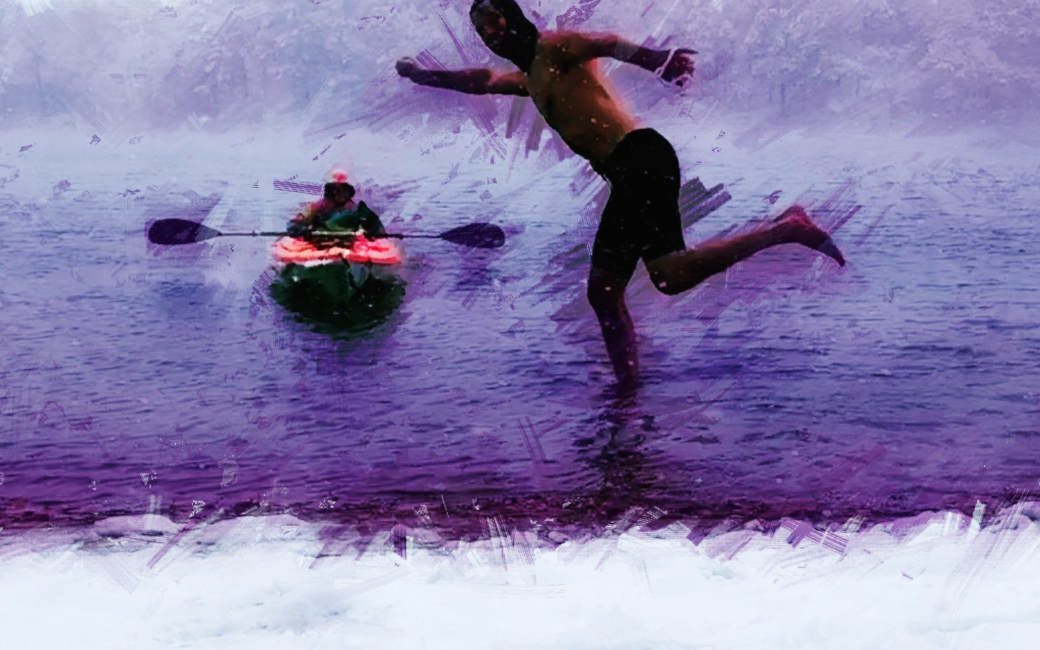
 But before I proceed further, first...The Dunker’s Disclaimer
But before I proceed further, first...The Dunker’s Disclaimer 70's Fahrenheit— In early June last year, my friend Duncan called me on the phone. "Ken, I'd like to work on my crawl stroke. Since you used to coach swimming, could you give me some pointers?" Duncan showed up the next morning, and we started swimming across the pond. I gave him some pointers. The water was a comfortable temperature, in the mid-seventies. We started swimming three times a week at 7 am. Dawn patrol fishermen dotted the shore, and occasional morning swimmers roamed the periphery. After two and a half years living by the pond, I hadn't "trained" by doing long distance swimming in these waters. I usually ventured down daily to romp in the pond with family and friends. For some reason I had been in a rut. I believed the indoor pool was for "training" and outdoors was for fun and play. That was about to change.
70's Fahrenheit— In early June last year, my friend Duncan called me on the phone. "Ken, I'd like to work on my crawl stroke. Since you used to coach swimming, could you give me some pointers?" Duncan showed up the next morning, and we started swimming across the pond. I gave him some pointers. The water was a comfortable temperature, in the mid-seventies. We started swimming three times a week at 7 am. Dawn patrol fishermen dotted the shore, and occasional morning swimmers roamed the periphery. After two and a half years living by the pond, I hadn't "trained" by doing long distance swimming in these waters. I usually ventured down daily to romp in the pond with family and friends. For some reason I had been in a rut. I believed the indoor pool was for "training" and outdoors was for fun and play. That was about to change. 60's— I remember thinking at the pond one morning..."Where did all the swimmers go?" Getting in the water in the morning was starting to feel a bit jolting to my body. When I surfed in California, the ocean water was usually between 55-60 degrees Fahrenheit year round. During the early New England fall, the kids and I had continued surfing in New Hampshire, Boston, and Rhode Island. We had been tracking the local ocean temperature at those locations. The pond temperature felt like it was in the same range. Being curious as to the daily pond temperature, I went to the local hardware store and bought a cheap thermometer. It confirmed that the temperature was in the 60’s. The morning swims felt so refreshing. The hot cup of coffee upon returning home after swims tasted better as I hugged it to my chest for warmth.
60's— I remember thinking at the pond one morning..."Where did all the swimmers go?" Getting in the water in the morning was starting to feel a bit jolting to my body. When I surfed in California, the ocean water was usually between 55-60 degrees Fahrenheit year round. During the early New England fall, the kids and I had continued surfing in New Hampshire, Boston, and Rhode Island. We had been tracking the local ocean temperature at those locations. The pond temperature felt like it was in the same range. Being curious as to the daily pond temperature, I went to the local hardware store and bought a cheap thermometer. It confirmed that the temperature was in the 60’s. The morning swims felt so refreshing. The hot cup of coffee upon returning home after swims tasted better as I hugged it to my chest for warmth. 40's— I kept swimming several times a week in my wetsuit. And then I saw the documentary My Octopus Teacher. In the movie, Craig Foster mentioned that he swam everyday for a year in the South African coastal waters. He said the water was around 5 degrees Celsius year round. I was a big fan of his work and had seen all of his previous documentaries. I pulled up the conversion table. 5 Celsius = 41 Fahrenheit. Craig swam in the movie with only a mask, snorkel, fins, a neoprene hoodie, and shorts. The previous winter I had taken a Wim Hof cold training course and had spent 15 minutes up to my neck in the water on the edge of the pond on a sunny January morning. My January dunk the previous winter was a glimpse into this cold water experience.
40's— I kept swimming several times a week in my wetsuit. And then I saw the documentary My Octopus Teacher. In the movie, Craig Foster mentioned that he swam everyday for a year in the South African coastal waters. He said the water was around 5 degrees Celsius year round. I was a big fan of his work and had seen all of his previous documentaries. I pulled up the conversion table. 5 Celsius = 41 Fahrenheit. Craig swam in the movie with only a mask, snorkel, fins, a neoprene hoodie, and shorts. The previous winter I had taken a Wim Hof cold training course and had spent 15 minutes up to my neck in the water on the edge of the pond on a sunny January morning. My January dunk the previous winter was a glimpse into this cold water experience. The first day it snowed while I was swimming in the pond, Phoebe joined me, paddling the kayak. She wore her favorite rainbow colored snow jacket. The water was warmer than the air, so it actually felt more comfortable to be in the water than standing on shore in the snow. Some winter days though, when the wind blew, and the snow was on the ground, it was really hard to get out of the water (or into the water). One windy winter day my fingers were so cold that I couldn't get my socks on when I emerged. Attempting to insert a wet foot into a fuzzy snow boot resulted in a wardrobe malfunction, and I had to hobble home trying to push my skateboard while wearing floppy boots. It didn't work well.
The first day it snowed while I was swimming in the pond, Phoebe joined me, paddling the kayak. She wore her favorite rainbow colored snow jacket. The water was warmer than the air, so it actually felt more comfortable to be in the water than standing on shore in the snow. Some winter days though, when the wind blew, and the snow was on the ground, it was really hard to get out of the water (or into the water). One windy winter day my fingers were so cold that I couldn't get my socks on when I emerged. Attempting to insert a wet foot into a fuzzy snow boot resulted in a wardrobe malfunction, and I had to hobble home trying to push my skateboard while wearing floppy boots. It didn't work well. Break-Up— As spring approached, the ice began to thaw around the edges and I resumed short dunks and then longer forays. One day as the ice retreated, I donned my wetsuit, hoodie, and gloves and called on my kayak copilot. Being someone who studies "survival" skills, I wanted to have a gauge for how thin ice needed to be to fall through, and what it would feel like to break through thin ice. With Phoebe as my backup, I swam to the edge of the remaining ice sheet and scrambled onto the ice. I jumped up and down until it cracked and I fell through. I did this repeatedly and practiced scrambling out onto thin ice after falling through. I appreciated my wetsuit and my copilot. I learned a lot that day about ice dynamics and how to practice pulling myself out should I ever need the skill. I had so much fun that a few days later I tried it again, but the warming conditions had changed so rapidly that I could no longer scramble onto the ice. Instead, it broke under my arms as I swam. I’d have to wait until next winter to try again.
Break-Up— As spring approached, the ice began to thaw around the edges and I resumed short dunks and then longer forays. One day as the ice retreated, I donned my wetsuit, hoodie, and gloves and called on my kayak copilot. Being someone who studies "survival" skills, I wanted to have a gauge for how thin ice needed to be to fall through, and what it would feel like to break through thin ice. With Phoebe as my backup, I swam to the edge of the remaining ice sheet and scrambled onto the ice. I jumped up and down until it cracked and I fell through. I did this repeatedly and practiced scrambling out onto thin ice after falling through. I appreciated my wetsuit and my copilot. I learned a lot that day about ice dynamics and how to practice pulling myself out should I ever need the skill. I had so much fun that a few days later I tried it again, but the warming conditions had changed so rapidly that I could no longer scramble onto the ice. Instead, it broke under my arms as I swam. I’d have to wait until next winter to try again. "After drop", also known as peripheral vasoconstriction, is what happens after you leave cold water. When your body is exposed to cold, it cleverly closes down the circulation in your limbs in order to keep the core and its vital organs warm. When you get out of the water and put warm clothes on, the body reverses the process. The warm circulation returns to the limbs, but this time the cold blood of the limbs returns to the core body and your core temperature will actually drop. So you start shivering. I'd make my coffee with shivering hands and then sit on a couch wrapped in a wool blanket until the shivering subsided while I read a book.
"After drop", also known as peripheral vasoconstriction, is what happens after you leave cold water. When your body is exposed to cold, it cleverly closes down the circulation in your limbs in order to keep the core and its vital organs warm. When you get out of the water and put warm clothes on, the body reverses the process. The warm circulation returns to the limbs, but this time the cold blood of the limbs returns to the core body and your core temperature will actually drop. So you start shivering. I'd make my coffee with shivering hands and then sit on a couch wrapped in a wool blanket until the shivering subsided while I read a book. It's really hard to describe the sensation of the deep cold swims. The moment I plunged into the cold water, my lungs reflexively gasped, but then, after the first initial strokes, I was just there. Sometimes it was a detached feeling, as if I were an observer watching my arms move through the air and water. Other times I was lost in the experience, as I gazed at the patterns of rocks, stumps, leaves, and fish below me. My favorite moments happened at the end of the swims, when I rolled over, grabbed my buoy and just floated— I lost the boundary between my form and the water, watched the clouds drift, felt my heartbeat in my chest, and was glad to be alive for another day.
It's really hard to describe the sensation of the deep cold swims. The moment I plunged into the cold water, my lungs reflexively gasped, but then, after the first initial strokes, I was just there. Sometimes it was a detached feeling, as if I were an observer watching my arms move through the air and water. Other times I was lost in the experience, as I gazed at the patterns of rocks, stumps, leaves, and fish below me. My favorite moments happened at the end of the swims, when I rolled over, grabbed my buoy and just floated— I lost the boundary between my form and the water, watched the clouds drift, felt my heartbeat in my chest, and was glad to be alive for another day.
 Most practitioners of ninjutsu who are part of the Bujinkan are familiar with the 5th Dan test. Students from around the globe travel to the Bujinkan honbu dojo (home dojo) in Nodashi, Japan to take this test. For this level of progression, a would-be 5th Dan sits with their back to a Dai Shihan or Soke (grandmaster) who is holding a training sword above their head. This test consists of one challenge. To pass, the student must sense the exact moment when the sword is coming down at their head and must instantly roll out of the way.
Most practitioners of ninjutsu who are part of the Bujinkan are familiar with the 5th Dan test. Students from around the globe travel to the Bujinkan honbu dojo (home dojo) in Nodashi, Japan to take this test. For this level of progression, a would-be 5th Dan sits with their back to a Dai Shihan or Soke (grandmaster) who is holding a training sword above their head. This test consists of one challenge. To pass, the student must sense the exact moment when the sword is coming down at their head and must instantly roll out of the way. Fortunately, we found one such teacher. His name is Josh Lane. He is the author of the award winning new book
Fortunately, we found one such teacher. His name is Josh Lane. He is the author of the award winning new book  How do you attain this? The first step is simply to take some time to be in the moment. Let go of your agenda. Let go of the things you were dealing with earlier in your day. Give yourself ten to fifteen minutes to just be present and settle into where you are. Focus on how you are feeling and how the landscape around you feels.
How do you attain this? The first step is simply to take some time to be in the moment. Let go of your agenda. Let go of the things you were dealing with earlier in your day. Give yourself ten to fifteen minutes to just be present and settle into where you are. Focus on how you are feeling and how the landscape around you feels. There's a different feeling around you in the forest when the animals are going about their usual business feeding, foraging, resting, singing, or working on their nests. That's what we call a harmonious feeling or baseline versus when a predator is on the move. When a predator is nearby, the birds become alarmed. This creates an agitated sensation amongst the animals. By becoming present, you open up the possibility to tune into the feeling of a place and to the feeling of what's going on around you. This helps you awaken intuition because we have to be present in the first place to tap into it.
There's a different feeling around you in the forest when the animals are going about their usual business feeding, foraging, resting, singing, or working on their nests. That's what we call a harmonious feeling or baseline versus when a predator is on the move. When a predator is nearby, the birds become alarmed. This creates an agitated sensation amongst the animals. By becoming present, you open up the possibility to tune into the feeling of a place and to the feeling of what's going on around you. This helps you awaken intuition because we have to be present in the first place to tap into it.
 When you have an instinctual experience, you can think of it as the voice of the ancestors communicating through genetic or energetic encoding. This helps us to survive and thrive. Instinct can speak through a "gut feeling" that we're all familiar with. However, it might speak in other ways.
When you have an instinctual experience, you can think of it as the voice of the ancestors communicating through genetic or energetic encoding. This helps us to survive and thrive. Instinct can speak through a "gut feeling" that we're all familiar with. However, it might speak in other ways. Josh: I often suggest that people should begin by walking very slowly. Try slowing down to a third or quarter of your usual speed. Feel each footstep. Be fully in your senses. Notice how you are feeling physically and emotionally. Tend to your physical needs first. This will allow you to be more fully present. Are you feeling open and receptive to nature? How do you feel internally? Once you are present, expand your senses outward. Notice what's going on with the birds and the wind. Notice the scent of the air. Open each of your senses fully. I go deep into this in my book, Conscious Nature. I teach the four stages of meditating outdoors. Each stage is designed to help tap into your intuition. As you get into your senses, start to notice if things arise on the screen of your mind's eye. As your senses notice things, do you get a flash of anything in your mind's eye or a sense of knowing? It could even be a gut feeling that there might be something interesting to check out in a particular direction. Some people call this "body radar." Follow up on your intuition. Explore nature and see what you discover. This is how you build trust and capacity with intuition because intuition is a sense. The more you work with it, the more it comes to life. This is what I teach in my course Exploring Intuition in Nature. It only takes ten to fifteen minutes a day to make a difference and to start developing your intuition.
Josh: I often suggest that people should begin by walking very slowly. Try slowing down to a third or quarter of your usual speed. Feel each footstep. Be fully in your senses. Notice how you are feeling physically and emotionally. Tend to your physical needs first. This will allow you to be more fully present. Are you feeling open and receptive to nature? How do you feel internally? Once you are present, expand your senses outward. Notice what's going on with the birds and the wind. Notice the scent of the air. Open each of your senses fully. I go deep into this in my book, Conscious Nature. I teach the four stages of meditating outdoors. Each stage is designed to help tap into your intuition. As you get into your senses, start to notice if things arise on the screen of your mind's eye. As your senses notice things, do you get a flash of anything in your mind's eye or a sense of knowing? It could even be a gut feeling that there might be something interesting to check out in a particular direction. Some people call this "body radar." Follow up on your intuition. Explore nature and see what you discover. This is how you build trust and capacity with intuition because intuition is a sense. The more you work with it, the more it comes to life. This is what I teach in my course Exploring Intuition in Nature. It only takes ten to fifteen minutes a day to make a difference and to start developing your intuition. Pathways: Anything else you'd like to share with us?
Pathways: Anything else you'd like to share with us?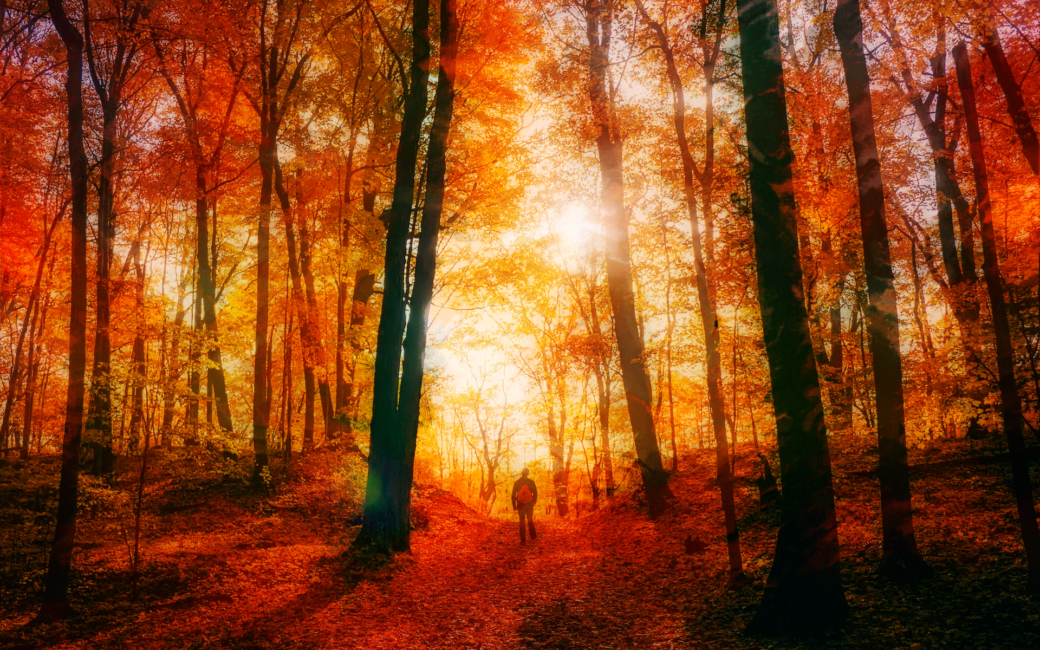



 Before long, a small covey of California quail appeared. Quail are usually very skittish. When they see people they usually run or fly away while making a lot of alarm calls. When these quail came out, one of them flew up to a nearby tree about six feet off the ground. It looked over toward the other bush where the previous little bird was, and then it looked back at us. The quail gave no alarm. The rest of the quail walked by us while continuing to eat. Soon they were right next to us, less than two feet away!
Before long, a small covey of California quail appeared. Quail are usually very skittish. When they see people they usually run or fly away while making a lot of alarm calls. When these quail came out, one of them flew up to a nearby tree about six feet off the ground. It looked over toward the other bush where the previous little bird was, and then it looked back at us. The quail gave no alarm. The rest of the quail walked by us while continuing to eat. Soon they were right next to us, less than two feet away!
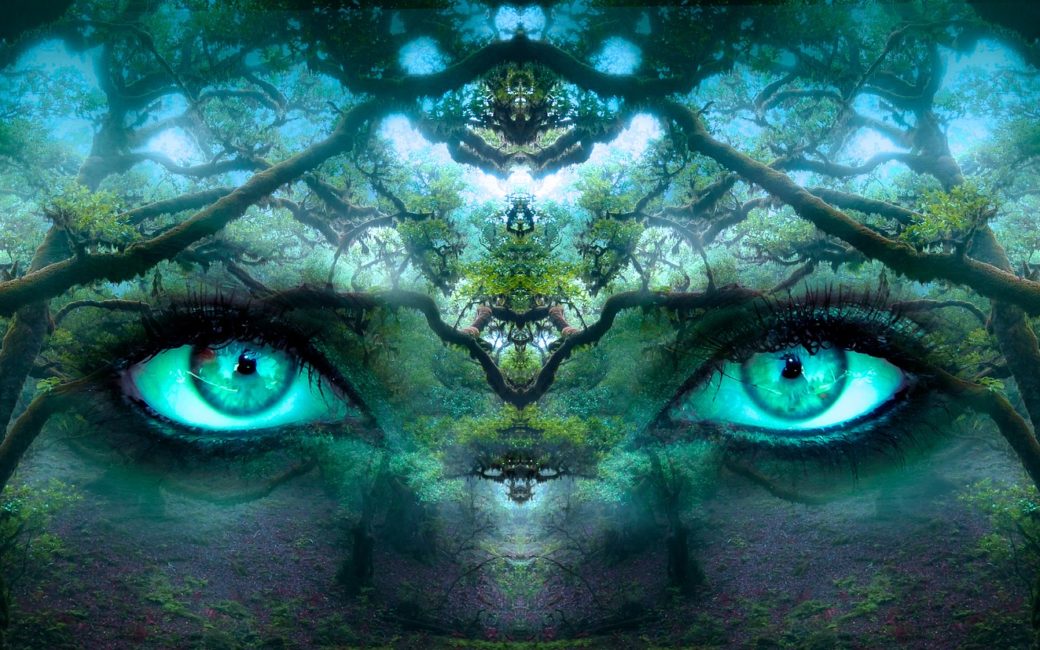
 In today's post, Dai Shihan Mark Roemke shares a technique for locking in the energy of a place of power.
In today's post, Dai Shihan Mark Roemke shares a technique for locking in the energy of a place of power.
 My daughter learned this technique in the NTTV Live class with Sensei Roemke the other day. The next day we were out with our Ninjas in Nature Youth Program making rope ladders and then practicing the art of disappearing into the the trees. My daughter was the first to climb into the tree. She disappeared high into the tree. Several other young ninjas followed up the ladder and scrambled around the lower branches of the tree. I noticed my daughter was being very still.
My daughter learned this technique in the NTTV Live class with Sensei Roemke the other day. The next day we were out with our Ninjas in Nature Youth Program making rope ladders and then practicing the art of disappearing into the the trees. My daughter was the first to climb into the tree. She disappeared high into the tree. Several other young ninjas followed up the ladder and scrambled around the lower branches of the tree. I noticed my daughter was being very still.
 I want to share a short story that just happened to me on my back porch as I was watching the sunrise, drinking my morning mate, and tuning into the language of the birds.
I want to share a short story that just happened to me on my back porch as I was watching the sunrise, drinking my morning mate, and tuning into the language of the birds.


 I noticed too on the ground in the yard below our porch, there were no birds feeding. During baseline, birds are relaxed. Feeding on the ground casually is an example of birds behaving in baseline. Usually our yard would have sparrows, juncos, robins, and cardinals hopping about on the ground searching for breakfast.
I noticed too on the ground in the yard below our porch, there were no birds feeding. During baseline, birds are relaxed. Feeding on the ground casually is an example of birds behaving in baseline. Usually our yard would have sparrows, juncos, robins, and cardinals hopping about on the ground searching for breakfast. But then my yard became quiet again. This time, however, it had a different feel to it.
But then my yard became quiet again. This time, however, it had a different feel to it.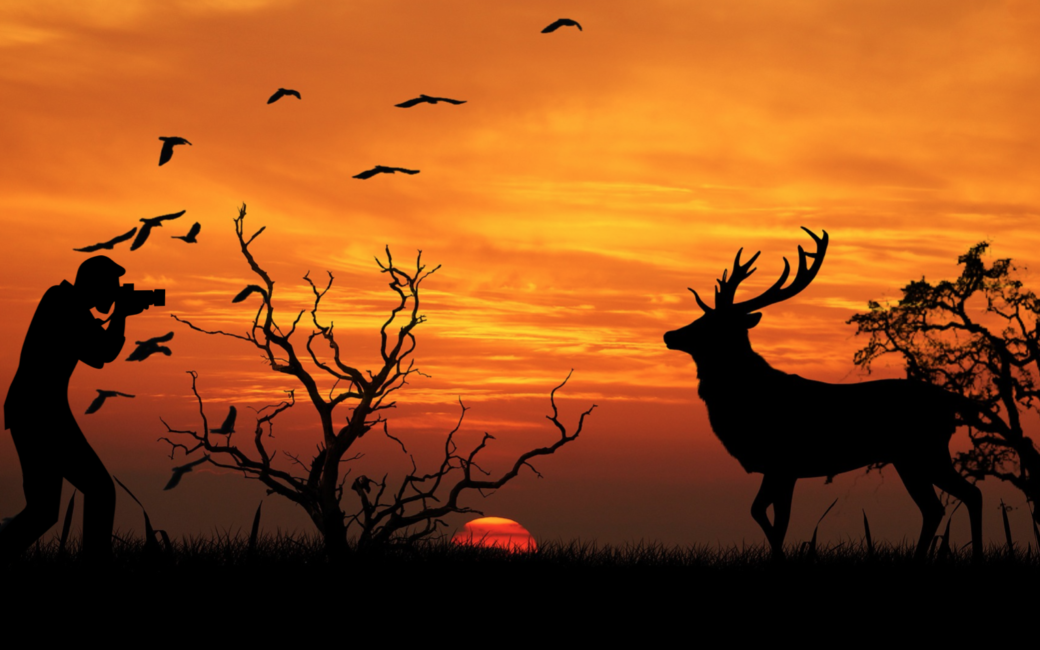
 Over thirty years ago, one of Jon's first students was a young guy named Dan Gardoqui. Today Dan is one of the preeminent trackers, naturalists, and mentors of nature connection in North America. He co-founded and was Executive Director for the White Pines Program in Maine. He lives in Maine today where he runs
Over thirty years ago, one of Jon's first students was a young guy named Dan Gardoqui. Today Dan is one of the preeminent trackers, naturalists, and mentors of nature connection in North America. He co-founded and was Executive Director for the White Pines Program in Maine. He lives in Maine today where he runs  goal is to get closer to a moose in the fall, I am going to go to a place on the landscape where I am most likely to find them. So I have to understand what moose are eating, what they are thinking, what they are doing biologically that time of year which is their rut. Or after their rut when they are done breeding, I need to know if they are likely to be alone, or in pairs, or in bachelor groups. If they are in their thicker winter fur and it's a warmer day, they are going to be seeking out cooler and moister areas, so I'm going to have to think about microhabitats. I'm going to have to think about the cool pockets on the landscape. Ecological awareness flows with the rhythms of nature and is about understanding the natural history of animals and how habitats are preferential or not to different animals.
goal is to get closer to a moose in the fall, I am going to go to a place on the landscape where I am most likely to find them. So I have to understand what moose are eating, what they are thinking, what they are doing biologically that time of year which is their rut. Or after their rut when they are done breeding, I need to know if they are likely to be alone, or in pairs, or in bachelor groups. If they are in their thicker winter fur and it's a warmer day, they are going to be seeking out cooler and moister areas, so I'm going to have to think about microhabitats. I'm going to have to think about the cool pockets on the landscape. Ecological awareness flows with the rhythms of nature and is about understanding the natural history of animals and how habitats are preferential or not to different animals. Dan: This one is fun. "Helper" is a bit biased. It implies that the animals have the intention of being helpful to humans, and they may actually. I'm not sure we can say they definitely do or definitely don't. Some of the most well known examples are of ravens. There are many stories about these birds and how they sometimes act as guides to help people or other animals find certain things on a landscape, such as carcasses or prey species. If you pay attention to some basics of how ravens communicate, and if you are open to the fact that you are in communication with them, because frankly we all are in communication with the animals in one way or another whether we are conscious of it or not, then they can truly help you with some of your goals. The flip side of this relationship is that the ravens also get a benefit. For instance, if you are a hunter, and the ravens are helping you find your prey, after you successfully get that animal, you may leave parts of that animal behind after you process it. Then, the ravens will benefit from this food. There are other examples of this such as the honey guides in Africa.
Dan: This one is fun. "Helper" is a bit biased. It implies that the animals have the intention of being helpful to humans, and they may actually. I'm not sure we can say they definitely do or definitely don't. Some of the most well known examples are of ravens. There are many stories about these birds and how they sometimes act as guides to help people or other animals find certain things on a landscape, such as carcasses or prey species. If you pay attention to some basics of how ravens communicate, and if you are open to the fact that you are in communication with them, because frankly we all are in communication with the animals in one way or another whether we are conscious of it or not, then they can truly help you with some of your goals. The flip side of this relationship is that the ravens also get a benefit. For instance, if you are a hunter, and the ravens are helping you find your prey, after you successfully get that animal, you may leave parts of that animal behind after you process it. Then, the ravens will benefit from this food. There are other examples of this such as the honey guides in Africa. to humans as well. Knowing our human behaviors and patterns is really helpful and wise when we want to stay safe and alert. But, also start to pay attention to everything else. It can be pigeons, crows, rats, squirrels, little sparrows. Start to give your attention to things that are not human and be open to a fact that they are speaking a language that we can understand. Just start being curious, ask questions, and develop relationships with them. The more you spend time in the same place, quietly listening and observing and being open, chances are those individuals are going to get used to you being there. When you give them your attention and respect, they are probably going to do the same for you. Start by just listening, watching, and giving them space. Say you are walking down a sidewalk, and there's a pigeon in front of you feeding on the sidewalk, just slow down and go around it. If you start to give birds a little more space and respect, it changes the dynamics, and it changes the way you see the world.
to humans as well. Knowing our human behaviors and patterns is really helpful and wise when we want to stay safe and alert. But, also start to pay attention to everything else. It can be pigeons, crows, rats, squirrels, little sparrows. Start to give your attention to things that are not human and be open to a fact that they are speaking a language that we can understand. Just start being curious, ask questions, and develop relationships with them. The more you spend time in the same place, quietly listening and observing and being open, chances are those individuals are going to get used to you being there. When you give them your attention and respect, they are probably going to do the same for you. Start by just listening, watching, and giving them space. Say you are walking down a sidewalk, and there's a pigeon in front of you feeding on the sidewalk, just slow down and go around it. If you start to give birds a little more space and respect, it changes the dynamics, and it changes the way you see the world. Dan: This is what I was just talking about. Doing the quiet sits and giving birds your attention and respect for example. Doing this just helps us get out of our own little bubble of thoughts, emotions, and things that might cause disturbance around us. If you think of yourself as moving through a pond, when the mind is quiet, the ripples you cause and the way you move is much smoother, so there are many less ripples or disturbances. When the mind is busy, we tend to cause quite a wake, ahead and behind us. This tends to push things away from us. Many species are very sensitive to our thoughts and emotions, and where we are in our heads, including our own species. It's easy to tell if your family or friends are in a tough space or not. So it's silly to think that wildlife can't detect this as well. Whatever helps you to get to this calm mental space, be it yoga, breathing exercises, or meditation, it's going to help you be more "invisible" in the forest. But it's not really being invisible to me because that means we are trying to hide from something. To me it's more about having integrity with the vibe of a forest or nature. It's not thinking that our human existence is the most important thing. It's just being open to all the other things that exist around us.
Dan: This is what I was just talking about. Doing the quiet sits and giving birds your attention and respect for example. Doing this just helps us get out of our own little bubble of thoughts, emotions, and things that might cause disturbance around us. If you think of yourself as moving through a pond, when the mind is quiet, the ripples you cause and the way you move is much smoother, so there are many less ripples or disturbances. When the mind is busy, we tend to cause quite a wake, ahead and behind us. This tends to push things away from us. Many species are very sensitive to our thoughts and emotions, and where we are in our heads, including our own species. It's easy to tell if your family or friends are in a tough space or not. So it's silly to think that wildlife can't detect this as well. Whatever helps you to get to this calm mental space, be it yoga, breathing exercises, or meditation, it's going to help you be more "invisible" in the forest. But it's not really being invisible to me because that means we are trying to hide from something. To me it's more about having integrity with the vibe of a forest or nature. It's not thinking that our human existence is the most important thing. It's just being open to all the other things that exist around us. places before you decide the techniques you are going to use to blend in with that place. For instance, the pace that you would move in a busy city street in rush hour in order to blend in better be pretty quick. Whereas the pace you are going to use in a quieter rural wild area will probably be a bit slower. So getting to know the baseline of a place and how to blend in with that baseline and how to be invisible, that's part of the stealth and camouflage. So you really need to know a place. Camouflage is not just about colors and patterns. It's about our energy and speed, our body movements, and where we put our eyes. There's all sorts of little tricks in there.
places before you decide the techniques you are going to use to blend in with that place. For instance, the pace that you would move in a busy city street in rush hour in order to blend in better be pretty quick. Whereas the pace you are going to use in a quieter rural wild area will probably be a bit slower. So getting to know the baseline of a place and how to blend in with that baseline and how to be invisible, that's part of the stealth and camouflage. So you really need to know a place. Camouflage is not just about colors and patterns. It's about our energy and speed, our body movements, and where we put our eyes. There's all sorts of little tricks in there.
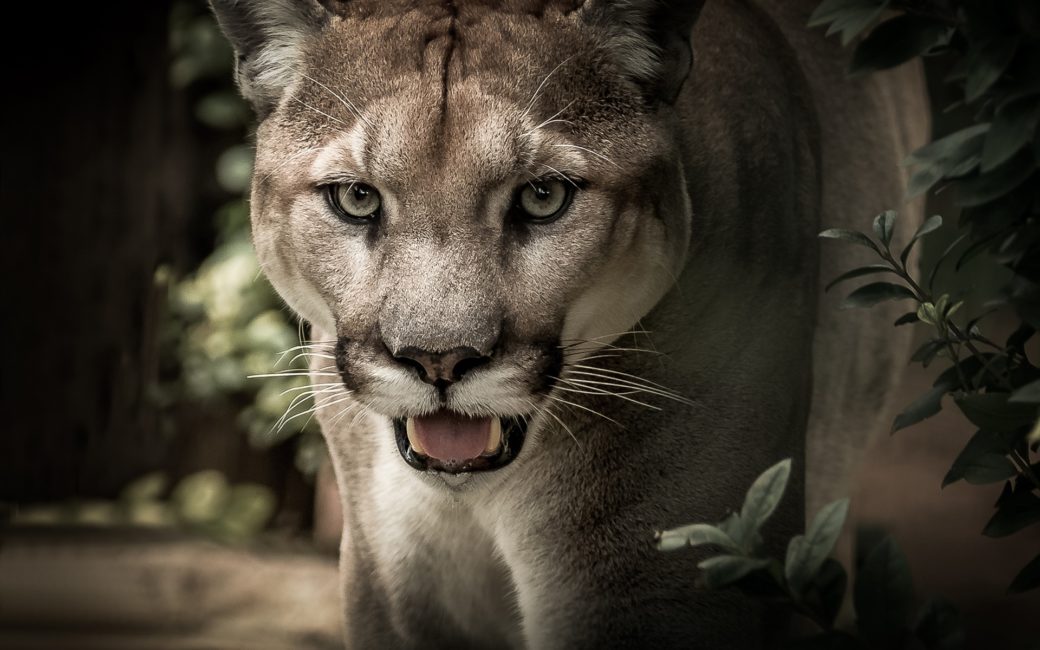
 To take a deeper dive into the art of bird language, we recently connected with Jon, a renowned author, tracker, naturalist, and mentor. Jon is a guiding force in bringing the practice of deep nature connection to the planet and is a pioneering voice in teaching the ancient art of bird language through his workshops and book,
To take a deeper dive into the art of bird language, we recently connected with Jon, a renowned author, tracker, naturalist, and mentor. Jon is a guiding force in bringing the practice of deep nature connection to the planet and is a pioneering voice in teaching the ancient art of bird language through his workshops and book,  JY: An example of bird language happened here on the evening of March 16. As the sun was going down. There were some deer feeding in the yard peacefully. There were three adult male deer and two yearling males. The yearlings were being yearlings. They were playing with each other. They were going off a little bit too far from from their uncles who would coax them back to the herd. The five bucks were feeding peacefully out in the meadow. At one point, a young male wandered off into the forest, on the east side of the field. Then on the west side of the field, where there is a forest edge, something changed. Out of that forest edge came the alarm call of the spotted towhee slowly moving from south to north following something unseen on the ground.
JY: An example of bird language happened here on the evening of March 16. As the sun was going down. There were some deer feeding in the yard peacefully. There were three adult male deer and two yearling males. The yearlings were being yearlings. They were playing with each other. They were going off a little bit too far from from their uncles who would coax them back to the herd. The five bucks were feeding peacefully out in the meadow. At one point, a young male wandered off into the forest, on the east side of the field. Then on the west side of the field, where there is a forest edge, something changed. Out of that forest edge came the alarm call of the spotted towhee slowly moving from south to north following something unseen on the ground.
 JY: Bird language really helps our brains. Also it opens up our awareness of the three dimensional space and has deep neurological benefits that brings us to the quiet mind. In the quiet mind, we’re able to hold silence and not be stressed out by the anxious thoughts that run through our head. Awareness of bird language allows us to be present in the moment. Of course, it allows us to see a lot more when we are moving around.
JY: Bird language really helps our brains. Also it opens up our awareness of the three dimensional space and has deep neurological benefits that brings us to the quiet mind. In the quiet mind, we’re able to hold silence and not be stressed out by the anxious thoughts that run through our head. Awareness of bird language allows us to be present in the moment. Of course, it allows us to see a lot more when we are moving around.

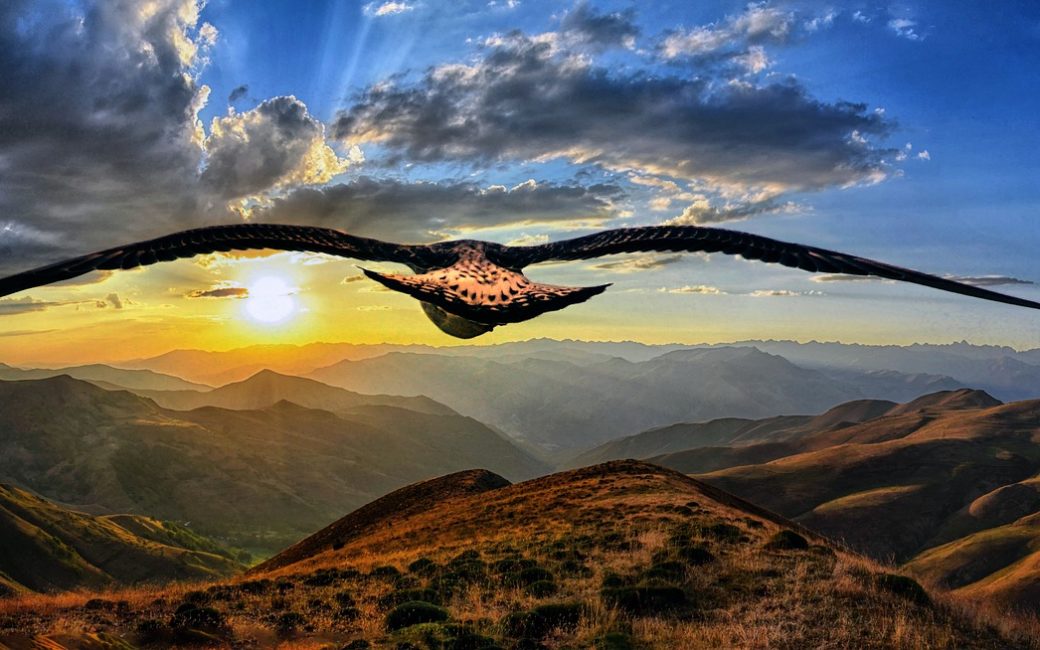
 on patrol in nature as a job occupation. Another thing we have in common is that we both eventually had our minds blown by the language of birds.
on patrol in nature as a job occupation. Another thing we have in common is that we both eventually had our minds blown by the language of birds.
 and hearing to try and detect the enemy when on patrol. My martial arts awareness training complimented this military training. Through years of martial arts training, I learned how to heighten my awareness.
and hearing to try and detect the enemy when on patrol. My martial arts awareness training complimented this military training. Through years of martial arts training, I learned how to heighten my awareness. He took me to a trail in the nearby redwood hills near where I live in Santa Cruz. A few miles into our morning hike we stopped. He turned to me and said, “Let's just stand here for a minute and tune in.”
He took me to a trail in the nearby redwood hills near where I live in Santa Cruz. A few miles into our morning hike we stopped. He turned to me and said, “Let's just stand here for a minute and tune in.”
